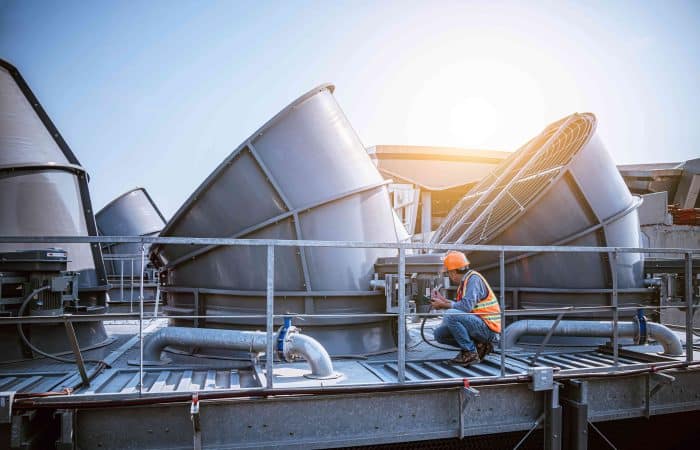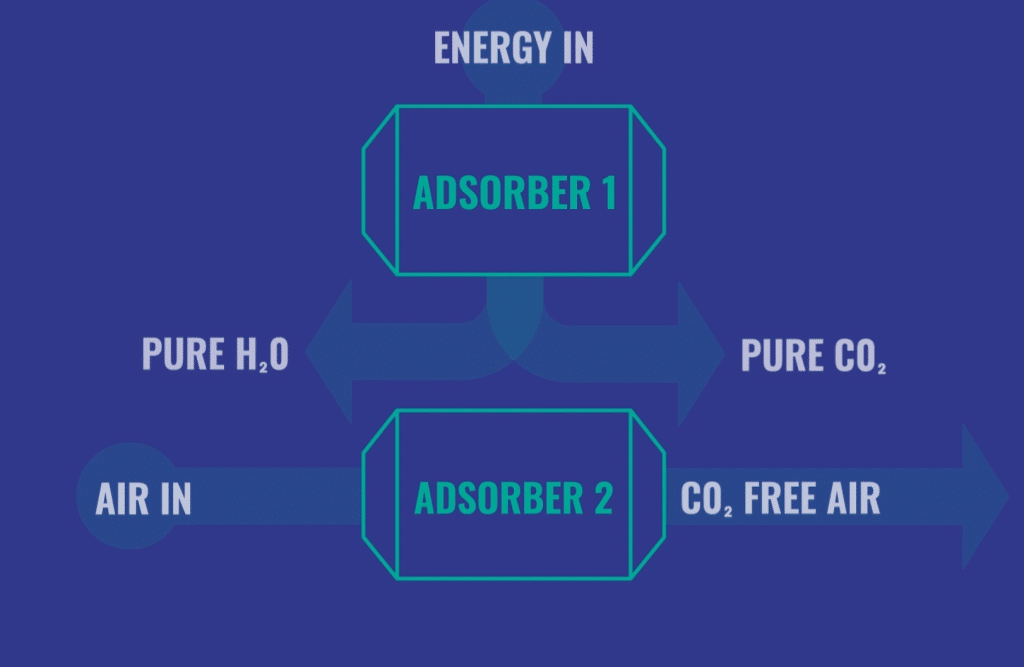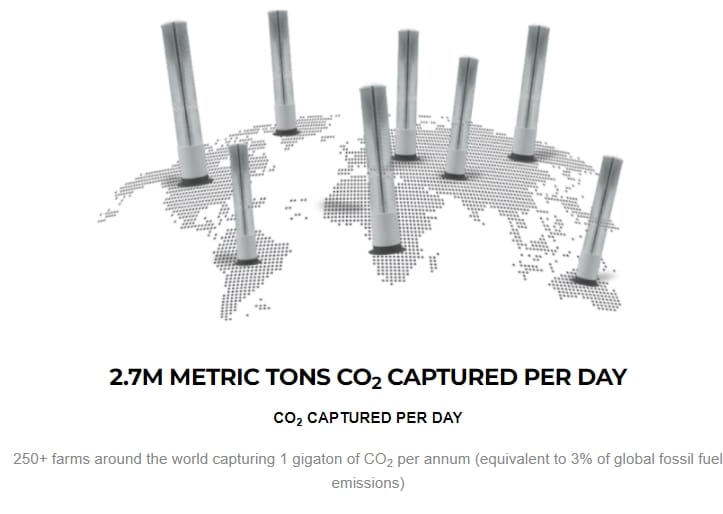Direct Air Capture (DAC) is crucial in the fight against climate change and is identified as a key solution to remove up to 310 billion tons of CO₂ by 2100. However, this demands significant investment in this field. With this motive, two Irish companies, NEG8 Carbon and Carbon Collect have unlocked their innovative DAC technology to combat carbon emissions.
Unleashing NEG8 Carbon’s Advanced DAC Technology to Tackle Carbon Emissions
NEG8 Carbon, a leading carbon capture company in Waterford, Ireland, has introduced major upgrades to its Direct Air Capture (DAC) system. As the company believes that simply cutting emissions will not fully address the problem, their innovative enhancements are making CO₂ capture from the atmosphere more efficient and effective.
How Does It Work?
The advanced DAC system operates by pulling in large volumes of air and passing it over specially designed sorbent materials that attract and hold CO₂ molecules. Once captured, the CO₂ can be safely stored underground or transformed into climate-neutral products, like sustainable aviation fuel. This innovative DAC method reduces sorbent by 80%.
Furthermore, their blueprint DAC system speeds up the CO₂ capture process and cuts regeneration time by 90%. Additionally, an improved heat exchange process boosts CO₂ uptake by 50% and lowers energy use by more than 20%. All these upgrades make the system more efficient and eco-friendlier.
“Plug and play” CO2 capture units.
We discovered something interesting from NEG8’s official website. They have made DAC widely accessible through modular, ‘plug and play’ carbon capture units. These units can be deployed almost anywhere. They are an integral part of the company’s vision to roll out millions of devices globally, capturing billions of tons of CO₂ ten years down the line.
The existing NEG8 Carbon system is a compact and modular solution for capturing CO2. Each module captures up to 400 tons of CO2 annually. Additionally, multiple modules can be stacked together at a site to enhance capacity.
Notably, the company focuses on reducing the cost per ton of CO₂ captured with these groundbreaking modular systems.
Dr. John Breen, CTO of NEG8 Carbon, said,
“These innovations are making significant improvements to our Direct Air Capture technology. They enhance both efficiency and sustainability, reinforcing our dedication to providing effective solutions in the fight against climate change.”
How the NEG8 Carbon Technology Works
Moving on, NEG8 Carbon has a robust plan for its global climate targets. By the end of this year, the company plans to test its latest innovations in a demo unit, with full deployment set for 2026. By 2035 it aims to install 25,000 DAC units across Ireland, aiming to capture 10 mtCO₂ annually. These efforts will further push the company to capture 100 mtCO₂ annually by 2050, at a global scale.
Carbon Collect Unveils Next-Gen Direct Air Capture Technology to Slash Costs
Carbon Collect, a leader in direct air capture (DAC) technology, has introduced its second-generation MechanicalTree, designed to capture CO2 directly from the atmosphere. This new system enhances the original design by increasing the amount of CO2 captured per unit of energy, thanks to advancements in sorbent materials and regeneration technology.
MechanicalTree, Mimicking Nature, Enhancing Efficiency
“The MechanicalTree™ is a thousand times more efficient than natural trees at removing CO2 from the atmosphere” – Carbon Collect
The MechanicalTree operates by simulating photosynthesis, but with engineered materials that absorb CO2 from the air more efficiently. The modular design allows clusters of these systems, known as “carbon farms,” to scale up “vertically” and capture significant amounts of CO2.
A milestone for the DAC industry
The MechanicalTree stands 10m tall and captures CO2 as it is exposed to natural wind. Once saturated, the column is lowered into a regeneration chamber where the CO2 is released and processed. This design is a significant advancement in reducing the high costs associated with conventional DAC, which can range from $250 to $600 per metric ton of CO2.
The company aims to bring this cost below $200 per ton by 2030, with the first installation of the Gen-II MechanicalTree expected by 2024 year-end. They expect commercial deployments beginning in 2025.
Pól Ó Móráin, CEO of Carbon Collect, emphasized that this innovation is a response to market demands and expert collaboration. He added that they are offering a solution that is more efficient, scalable, and cost-effective than anything before.
Early deployments are planned across the US, Europe, and other regions and will play a key role in the Southwest Regional Direct Air Capture Hub. Notably, their first industrial-scale MechanicalTree™ is already operational in Tempe, Arizona. All these scaling efforts are supported by the U.S. Department of Energy.
source: Carbon Collect
In conclusion, both NEG8 Carbon and Carbon Collect have set ambitious goals with their innovative direct air capture technology. Additionally, governments are playing a significant role in supporting this effort, as financial feasibility would otherwise be challenging. The US DOE and the EU have integrated DAC into their climate strategies, aiming for carbon neutrality by 2050.




